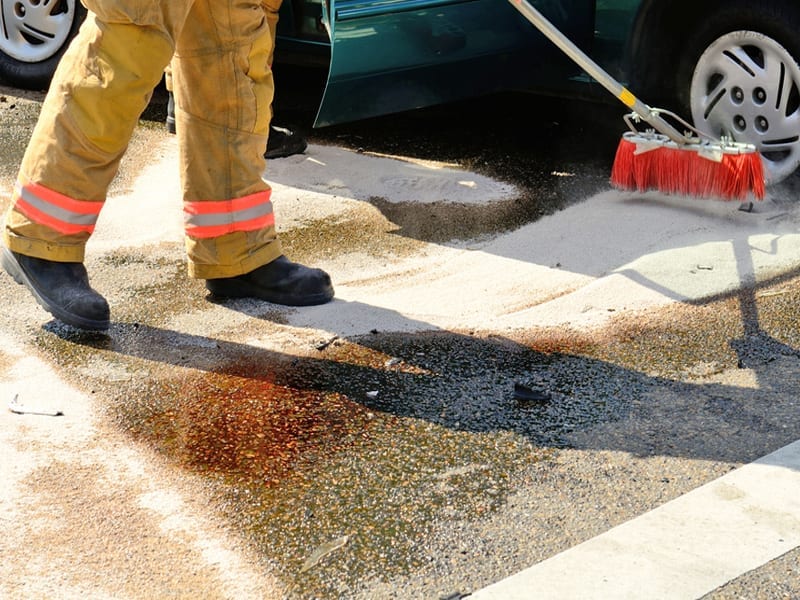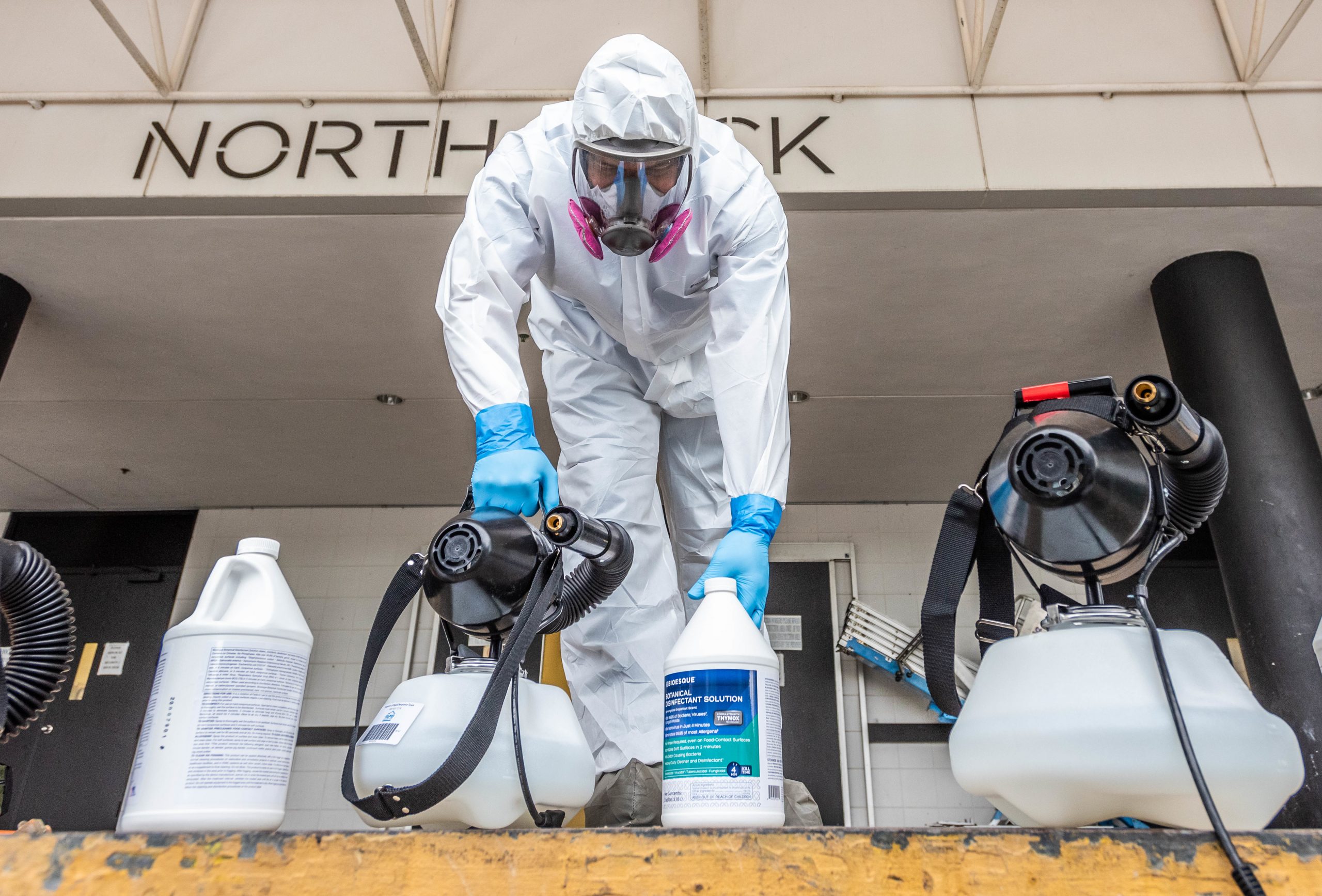Biohazard Removal: Safe Handling and Disposal of Hazardous Products
Biohazard Removal: Safe Handling and Disposal of Hazardous Products
Blog Article
Professional Biohazard Cleaning for Criminal Activity Scenes, Trauma Incidents, and Infected Spaces
In the world of professional biohazard cleanup, thorough focus to detail and adherence to security protocols are paramount. As we delve right into the complexities of biohazard cleaning for these delicate atmospheres, a much deeper understanding of the challenges and important procedures involved will certainly emerge, dropping light on the crucial function of professional cleaning solutions in recovering security and peace of mind.

Relevance of Biohazard Clean-up
Biohazard cleaning adhering to criminal offense scenes and injury occurrences is important for guaranteeing the security of people and the atmosphere. When these incidents happen, they commonly leave a range of biohazards such as blood, bodily liquids, and various other possibly infectious products. These materials can nurture harmful pathogens like infections and bacteria, posturing serious health and wellness threats if not correctly cleaned and sanitized.
Expert biohazard cleaning services are trained to deal with these hazardous materials securely and effectively. They have the necessary tools, such as individual safety equipment and specialized cleansing representatives, to completely decontaminate the influenced areas. By entrusting the clean-up to skilled experts, individuals can avoid direct exposure to harmful microorganisms and protect against the spread of transmittable illness.
Moreover, appropriate biohazard cleaning is necessary for safeguarding the setting. Incorrect disposal of biohazardous products can infect soil, water resources, and air, presenting a danger to wild animals and the community. By adhering to rigorous cleaning procedures, professionals can make sure that biohazards are safely gotten rid of and disposed of according to regulations, lessening the risk of environmental contamination.
Kinds of Biohazards Encountered
Numerous unsafe materials generally experienced in criminal activity scenes and injury incidents existing considerable health and wellness risks otherwise handled effectively. Blood and bodily liquids are among the most common biohazards discovered in these scenarios. These liquids can carry pathogens such as HIV, hepatitis B and C, and other hazardous bacteria. Furthermore, tissues, body organs, and body components can also position major health dangers due to prospective contamination.
Another type of biohazard typically come across is sharp items like needles, broken glass, and various other products that can cause injuries and transfer infections. Chemical dangers are likewise a problem, as crime scenes may contain materials like tear gas, pepper spray, or medication manufacturing materials that call for specialized handling and disposal treatments to stop more injury.
Moreover, mold and mildew and germs growth can occur in rooms where disintegration or extended direct exposure to wetness has actually happened. These microbes can launch contaminants and allergens right into the air, posturing breathing threats to those subjected. On the whole, biohazard clean-up experts must be fully equipped and experienced to successfully handle these numerous sorts of unsafe products to guarantee the safety and security of themselves and others.
Tools and Safety Equipment
When resolving the crucial task of handling biohazards encountered in criminal offense scenes and injury events, the utilization of appropriate tools and protective gear is paramount to ensuring the safety and security of people involved in the clean-up procedure. Personal safety devices (PPE) such as gloves, masks, goggles, and coveralls are necessary to prevent direct contact with potentially harmful compounds. Respirators are important when dealing with biohazards that may come to be airborne, safeguarding workers from inhaling harmful fragments. Specialized cleaning devices like biohazard sharps, anti-bacterials, and bags containers are required for the risk-free collection and disposal of contaminated materials. In addition, heavy-duty equipment such as industrial-grade cleaner, foggers, and ozone generators might be called for to extensively sanitize the damaged location. Guaranteeing that all equipment is properly preserved, frequently checked, and used according to safety and security standards is essential in decreasing the threat of direct exposure to biohazards throughout cleaning operations.
Clean-up Process and Methods
Efficient and complete clean-up of biohazardous products from criminal activity scenes and injury events calls for thorough attention to information and adherence to rigorous safety and security protocols. The cleanup process usually involves a number of vital steps. Initially, the location must be examined to identify the level of contamination and the ideal cleansing methods needed. Next off, all biohazardous products, including blood, bodily fluids, and cells residues, must be meticulously eliminated and taken care of according to neighborhood policies.
Following the elimination of biohazardous products, the afflicted area undergoes a complete cleaning and disinfection process. This step entails the use of specialized cleansing representatives and tools to make certain that all traces of contamination are eliminated. After more tips here cleansing, the location goes through extensive screening to confirm that it is free and secure of any remaining biohazards.

Decontamination and Disposal Procedures
To make sure detailed decontamination and proper disposal of biohazardous products, complying with the precise cleaning process, details treatments should be carefully followed with strict adherence to safety and security methods. Decontamination includes the removal or neutralization of contaminants to lessen the risk of exposure and spread of dangerous substances. This procedure generally includes cleaning, decontaminating, and sanitizing the afflicted location utilizing customized equipment and EPA-approved chemicals.
When decontamination is finished, appropriate disposal of biohazardous materials is important to avoid further contamination or damage. Biohazardous waste, such as bodily fluids or blood-soaked materials, should be very carefully accumulated, packaged, and labeled according to regulatory standards. ATP testing. These materials are then transported to accredited centers for disposal with appropriate networks, ensuring conformity with regional, state, and federal regulations

Final Thought
To conclude, specialist biohazard cleaning is essential for making sure the risk-free and reliable elimination of dangerous products from criminal activity scenes, trauma cases, and contaminated rooms. By making use of specific devices, protective gear, and following correct cleanup processes and techniques, biohazard clean-up groups can efficiently decontaminate and dispose of biohazards, decreasing the risk of exposure and damage to individuals and the environment.
As we dig into the ins and outs of biohazard clean-up for these delicate environments, a much deeper understanding of the obstacles and vital treatments involved will certainly emerge, shedding light on the important role of specialist cleaning solutions in recovering security and tranquility of mind.
Specialist biohazard cleanup services are trained to take care of these dangerous products safely and efficiently. By complying with stringent clean-up methods, professionals can guarantee that biohazards are securely removed and disposed of in accordance with laws, minimizing the risk of environmental contamination.
On the whole, biohazard cleanup experts have to be fully equipped and experienced to properly handle these various kinds of hazardous products to guarantee the safety of themselves and others.
When dealing with the crucial task of dealing with biohazards come across in crime important link scenes and trauma incidents, the use of correct tools and safety equipment is critical to making sure the safety and security of people entailed in the clean-up procedure.
Report this page